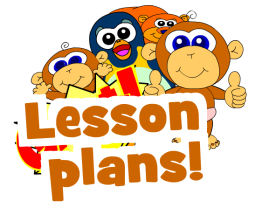 I’ve just updated the main lesson plans page to be the new “learn by making mistakes” version.
I’ve just updated the main lesson plans page to be the new “learn by making mistakes” version.
There are a still a few teachers out there who don’t like this approach, but I guess they won’t be using Genki English anyway! 🙂
I’ve also added in lots of comments from questions I’ve been getting at workshops this year.
So do check it out and let me know what you think in the comments here.
If it’s all OK I’ll redo the video at the top of the page!
be genki,
Richard
P.S. One idea I’m thinking about for my TED talk in November is this “learning by making mistakes” idea. What do you think? Good idea? Bad idea? Do let me know in the comments!



I think it is really a great idea, especially as you are in Japan;
they always use the saying失敗は成功の元and I know it is something Japanese ES teachers really agree upon. Teachers love my lessons so much because they see me putting it into practice with the kids.
They say: this is what we are telling them again and again” and I just say”Yeah, you are TELLING them, but you need to SHOW them. This is really hard for them, well and it CAN be hard if you are not conscious about it.
so what I think would be just great is, if you could “not only talk” about this subject but show tricks and activities where this comes to practice
I think the key words in the new lesson plan are “have patience” (I might also throw in, “stay calm”). I imagine teachers worry that the kids might “not get it”, that they might not self correct enough to learn the material. It can be frightening to take your hands off the wheel. But from experience I’ve learned that groups of enthusiastic children can be better teachers than an adult (with a little guidance of course).
I do like this idea of Learning by mistakes. I’d like to see a video of it happening. It seems to me if the class is shouting out different directions at the same time for the mouse to be moved, it is chaos.
Hi Janet, it’s not usually a problem as crowds will always agree on one *unless* there is purposeful confusion in the game (e.g. the 13 vs. 30 game), which then splits them down the middle, and just like a football match they get so passionate until the click is made!!
Richard I think that one of the amazing things you have brought to classrooms with Genki is the confidence and empowerment that Genki gives to students (of all ages). Gestures and “sorry” make sure that everyone can participate and get practice until it is their norm. Also the way you start with sad/tired and end with happy/good in your songs is very clever, and getting kids to sing “I like vegetables” is amazing! Learning from mistakes is in this, but only because you have framed it all in so much positivity. I think sharing those techniques is a more interesting topic!
I think you will love this book, Teach Like a Pirate. Richard, I could definitely feel your spirit while reading this book!
http://www.amazon.com/Teach-Like-PIRATE-Engagement-Creativity/dp/0988217600/ref=sr_1_1_ha?ie=UTF8&qid=1373290377&sr=8-1&keywords=teach+like+a+pirate
Thanks for the recommendation Gumby, now downloading to my kindle! 🙂
I really want to try this. I will definitely need to explain the idea and rules to the assistant and the kids, otherwise the control kid just clicks randomly without listening to the software…and then adding in the classmate instructions!
We’ve got a way round this Martin, you just reminded me to upload the video!
Mistake is not only a mistake and no one can learn without making mistakes. So it is natural when our students make mistakes during their learning process. If we prevent them from making mistakes, it means that they learn nothing because no one can do everything right for the first time. Moreover, from students’ mistakes, we can realize what our students have known and what they have not mastered clearly so that we can adjust our lessons to suit their level. Besides, we can see that mistakes also occur in the process of learning our native language or first language, but these mistakes are regulated by our parents or people around us. Therefore, it is teachers’ responsibility to help students to adjust what they say wrong in the same way they study their first language. Additionally, when students make mistakes and are taught how to correct their mistakes, they will stick the grammar rules in the mind longer and will try to avoid making the same mistakes for the next time when they use them again. But the most important thing is that teachers shouldn’t correct students’ mistakes all the time because this makes students feel shy, we should only help them correct serious mistakes that make the conversation difficult to understand; in contrast we should ignore minor mistakes and correct them at another time because these minor mistakes may be corrected by students themselves when they hear their teacher’s talks. In conclusion, “learning by mistakes” is a good way to learning a language because students can learn from their mistakes.